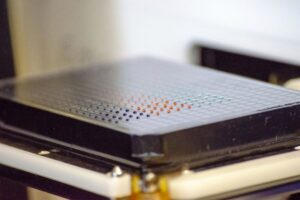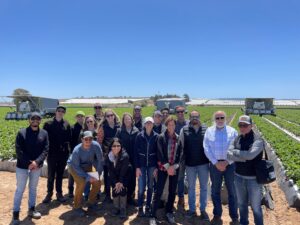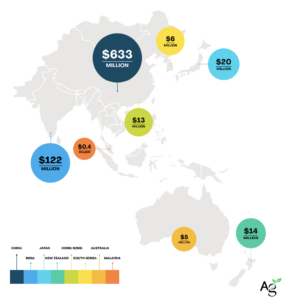**Stay tuned for further updates on the differences between Cibus’ RTDS process and other gene editing tools such as CRISPR Cas-9**
Cibus, a company using gene editing technology to breed crops with improved characteristics, has raised $70 million in Series C funding.
Fidelity Management and Research Company led the round with participation from real estate group Alexandria Venture Investments and Cormorant Asset Management, a pharmaceuticals and biosciences-focused investor.
The company has launched its first crop in the US, dubbed SU Canola, to be tolerant of sulfonylurea herbicides. SU Canola, which is non-GMO, has also received regulatory approval in Canada. The company will also use its technology to produce crops capable of reaching higher yields, with higher nutritional value, drought tolerance, and disease resistance.
“Farmers need the ability to control their weeds and one of the things people don’t necessarily understand is that herbicide tolerance reduces the amount of herbicide needed; conventionally farmers would use a multitude of different herbicides to control their weeds as crops are unable to withstand high doses,” said Peter Beetham, CEO of the company. “But with SU Canola, they’ll be able to control their weeds better with the sulfonylurea herbicide, reducing the need to apply several other chemicals.”
Cibus is using its proprietary gene editing tool, the Rapid Trait Development System (RTDS), to edit the genes of crops at specific sites — for specific characteristics — without introducing any foreign DNA, a core attribute of GMO crops as they are defined today. RTDS is one of a set of gene editing tools available today including the more famous CRISPR Cas-9.
“There is a pivot occurring within breeding itself due to the cost of transgenic crop development coupled with a growing lack of global acceptance for these technologies,” reads the Cibus website.
Beetham argues that the results of RTDS are indistinguishable from those attained with traditional plant breeding and mutagenesis except the speed at which the traits are developed. And this makes the system stand out from other gene editing alternatives. (Mutagenesis is the process by which the genetic information of an organism is changed, resulting in a mutation. It may occur spontaneously in nature, or as a result of exposure to mutagens.)
“Not all gene editing is the same; the RTDS allows you to truly edit genes — the analogy I like to use is spell check in Microsoft Word that repairs and corrects words,” he told AgFunderNews.
RTDS does this using a “gene repair oligonucleotide” (GRON). This GRON is inserted into a cell to act as a repair template, directing or teaching the cell to edit the genome using its sequence as a guide without inserting any new genetics, said Beetham.
CRISPR, which stands for Clustered regularly interspaced short palindromic repeats, is a molecular defense mechanism found in bacteria that effectively directs Cas9 enzymes to cut DNA. Once the DNA strands are cut, the desirable genetic sequence can then be inserted or simply left to naturally repair itself.
“CRISPR is like having a keyboard with only the ‘delete’ button. You can’t edit the words, but you can remove — or knock-out — which makes it more limited, although of course still valuable,” he added.
Beetham also said that using the CRISPR Cas-9 tool requires the insertion of foreign DNA, which RTDS does not. However, RTDS does sometimes use the Cas-9 enzyme to make cuts in the DNA. (Cibus had not responded to further requests for comment on the differences between the processes when we went to press – stay tuned!)
Matt Crisp, CEO of Benson Hill Biosystems, the computational biology startup with its own CRISPR 3.0 technology, said that CRISPR can do much more than knock-out genetics pointing to examples of gene insertions, replacements, and swaps.
He also iterated that CRISPR can also be used to make genetic changes without the introduction of foreign DNA.
















Guest article: Why is routine antibiotic dosing still used when we have better livestock and aquaculture health solutions?